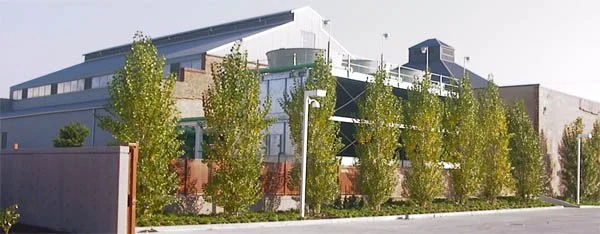Commercial, Office, and Industrial Projects
Bayer Corporation
South Properties Renovation and
Philadelphia Quartz Restoration
City of Berkeley, 2003
Philadelphia Quartz Restoration, 2003
Coordinating the efforts of a team of three separate architectural historians, archaeologists, civil engineers, and Bayer Corporation facilities management staff, we initially produced a focused resource significance analysis. The analysis was highlighted as part of a comprehensive mitigated negative declaration which was reviewed and ultimately approved by the City of Berkeley, prior to taking action on the 14.4-acre, 537,900 square foot Bayer South Properties Project in West Berkeley (partially visible in photo below). In order to accommodate the proposed packaging warehouse and sterile fill buildings, and associated parking and loading facilities, Bayer followed the environmental team’s recommendations to design, engineer and implement restoration of the badly deteriorated Philadelphia Quartz Furnace Room #1 Building complex, situated directly adjoining Grayson Street.
South Properties Renovation, 2000
Working in cooperation with Bayer Corporation and the City of Berkeley California, I prepared and concurrently processed a use permit and mitigated negative declaration to facilitate a major expansion of the company’s pharmaceutical manufacturing operations. The South Properties project authorized construction new buildings totaling 330,000 square feet, along with adaptive re-use of 220,000 square feet of former Colgate and Philadelphia Quartz structures on 14.4 acres located at Seventh and Grayson Streets in West Berkeley. During the first two years of a three-year development program, this project has resulted in a complete visual transformation of the site, highlighted by a new production warehouse building, restoration and enhancement of an historic Philadelphia Quartz furnace room into a fully operational equipment building, and completion of new parking and landscape facilities, including a public plaza and art sculpture. Unique Zoning Ordinance and local roadway capacity constraints were resolved through this process.







